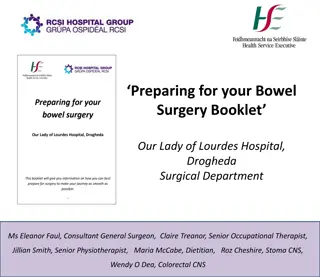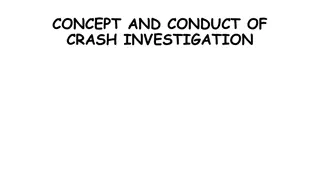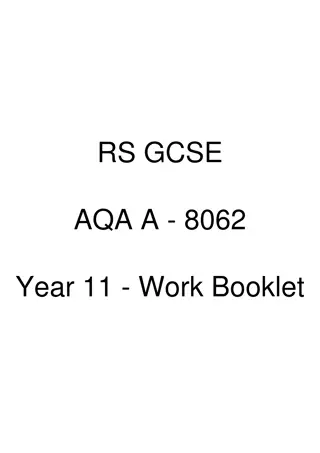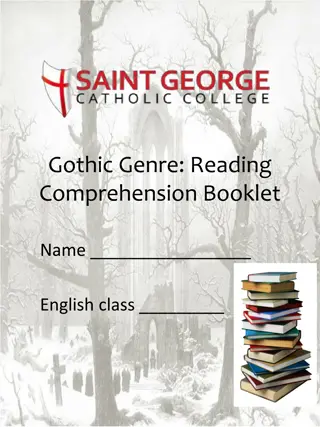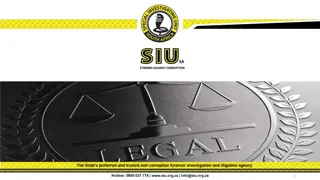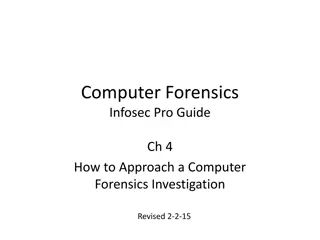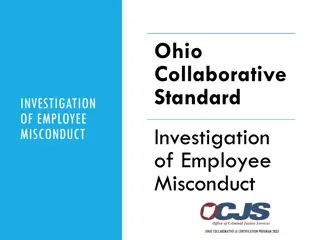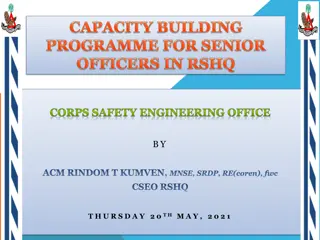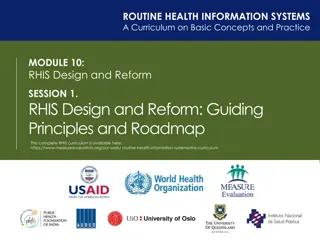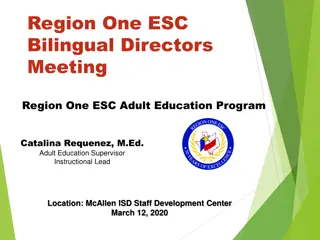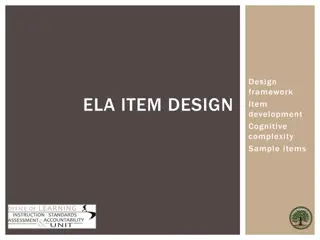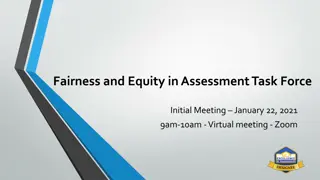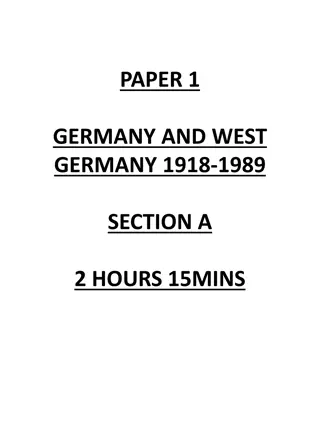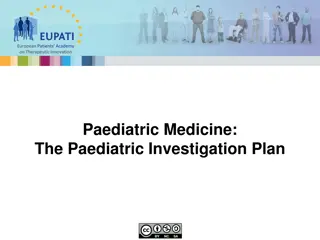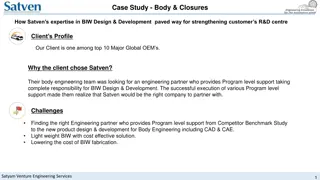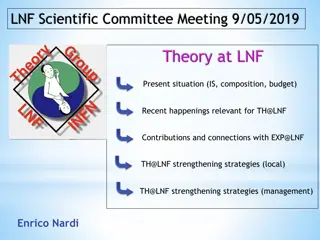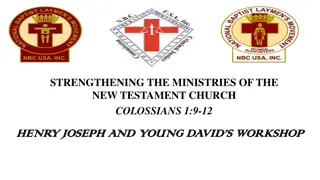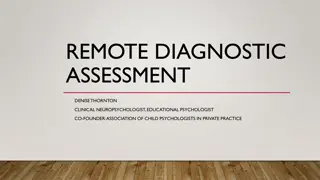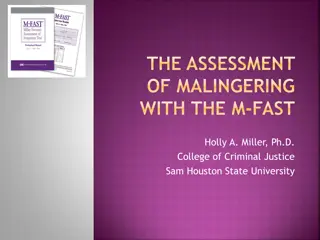Strengthening Assessment Design Investigation: Part B Booklet Overview
The LFA 2.2 Investigation: Part B Booklet delves into how strong the current assessment design is. It includes workshops, guides for mapping learning, insights, conversations with students, and making sense of evidence. The Learning KUBD framework focuses on knowledge, understanding, and doing. The Investigation Team collaborates to analyze and improve assessment designs in chosen units of work, involving teacher leaders, teachers, and students.
Download Presentation

Please find below an Image/Link to download the presentation.
The content on the website is provided AS IS for your information and personal use only. It may not be sold, licensed, or shared on other websites without obtaining consent from the author. Download presentation by click this link. If you encounter any issues during the download, it is possible that the publisher has removed the file from their server.
E N D
Presentation Transcript
LFA 2 Strengthening Assessment Design 2.2 Investigation: Part B Booklet How strong is our current assessment design?
LFA 2.2 Part B - Contents Contents of LFA 2.2 Investigation: Part B Booklet 1. An overview of LFA 2 Investigation: Part B . .. .. p.4 Workshop 1 2. Guide for teacher leader and teachers mapping of intended learning in a Unit of work . .. p.5 Learning KUBD Mapping scaffold noticing where out attention is .. . .. p.6 3. Guide for team mapping of timing and focus of assessments . .. . p.7 Assessment analysis grid for mapping exercise . . . p.8 4. Insights and Implications from the mapping exercises . p.9 Workshop 2 5. A conversation guide for use with students how did they experience the intended learning and assessments ... p.10 Insights and implications of the conversation with students . . p.11 6. How might we make sense of our evidence .. ... p.13 Part 1 Teacher Leaders and their team of teachers .. .. . p.14 Part 2 Investigation Lead and Teacher Leaders . . .. p.15 2
LFA 2.2 Part B About KUBD EdPartnerships designed the Learning KUBD framework after noticing that some areas of learning were being privileged over others. Often these areas were knowledge and skills, which in turn were much easier to assess. When teachers were asked what they noticed about the great learners in their classes, the B BEING EING aspect of learning attitudes, motivations and dispositions tended to predominate. What is the What is the Learning KUBD Learning KUBD framework? framework? K KNOWLEDGE NOWLEDGE and U UNDERSTANDING but not the same we need a foundation of knowledge if we are to arrive at more complex conceptual understandings. NDERSTANDING are connected D DOING OING, in this framework, refers to both skills and capabilities. Like understanding, capabilities are a higher order of complexity than a particular skill. They harness a set of skills to enable the ability to operate mindfully and capably in different contexts. 3
LFA 2.2 Part B - Overview Overview of LFA2 Investigation: Part B Overview of LFA2 Investigation: Part B The Investigation Team The Investigation Team (one Principal/AP, 3-5 teacher leaders, diverse mix of 6-10 teachers) become familiar with the investigation guides and materials and adapt to better suit local contexts where appropriate. The Investigation Lead (Principal/AP) The Investigation Lead (Principal/AP) selects teacher leaders that have experience leading the development of units of work. Each Teacher Leader Each Teacher Leader works with 2 2- -3 Teachers (teacher team). together. 3 Teachers (teacher team). They select a current or previous unit of work to analyse The Teacher Leaders The Teacher Leaders guide the process with the teachers to collaboratively analyse the learning and assessment design in the chosen unit of work. This includes: clarifying the intended learning of the unit analysing how well the assessment design enabled or is enabling learning progress to be revealed discussing about the what, when, how and who of assessment. Each teacher Each teacher then meets with 3 3- -4 Students 4 Students who have experienced the selected unit. . Students Students share how they are experiencing/experienced the learning and assessment of the chosen unit. They also share their perspectives on the strength and possibilities of the assessment design. Making Sense of Evidence Part 1 Making Sense of Evidence Part 1: Each teacher leader of the mapping exercises and discussions. Each teacher leader convenes with their teacher teacher team team to undertake Part 1 of making sense Making Sense of Evidence Part 2 Making Sense of Evidence Part 2: The Investigation Lead (Principal/AP) The Investigation Lead (Principal/AP) reconvenes the teacher leaders the sense-making which analyses school wide implications. teacher leaders to undertake Part 2 of 4
LFA 2.2 Part B Mapping Learning Guide WORKSHOP 1. Guide for Teacher Leaders and Teachers WORKSHOP 1. Guide for Teacher Leaders and Teachers - - Mapping of Intended Learning Mapping of Intended Learning Members from the investigation team conduct a close analysis of the unit assessments to determine how well they revealed learning progress in relation to the intended KUBD dimensions. Then the investigation team discusses how to strengthen the learning and assessment design so that they are both richer and better aligned. 1. The Teacher Teams (2-3) led by a teacher leader convene. 2. Each team member (2-3 teachers and 1 teacher leader) reads through the Unit independently and makes notes on the KUBD quadrant KUBD quadrant scaffold on page 6 page 6. They map what type of learning was intended by this Unit. (10-15 mins) 3. Each team discusses where they have located the intended learning and why. They discuss the balance of attention given to the different learning dimensions. The teacher leader fosters dialogue to tease out differences, reasons for those differences and invites readjustments to the KUBD quadrants in light of new insights. (10 mins) 4. Once the intended learning has been remapped, the team discusses how well the Unit assessment design aligned with the significant areas of intended learning? (10 mins) 5. Teacher leaders invite the teacher team to identify what they would like to learn more about in order to be able to strengthen assessment designs within Units of Work. This is recorded. (10 mins) 5
LFA 2.2 Part B Mapping Assessment Guide WORKSHOP 1 (cont.). Guide for Teacher leaders and teachers WORKSHOP 1 (cont.). Guide for Teacher leaders and teachers - - Mapping of Timing and Focus of Unit Assessments Mapping of Timing and Focus of Unit Assessments Teacher leaders facilitate their teacher teams to: 1. Use the Assessment Grid on page 8 to note when and why various assessments took place during the collaboratively analysed Unit. What pattern emerges? Are there a number of assessment opportunities across the unit? 2. How coherent are point in time assessments embedded in this Unit? What are they designed to reveal? 3. How well is learning progress revealed by the assessments we have designed? What might need attention in relation to the timing and focus of our assessments? 4. What might be some implications for HOW we assess? Record discussions on page 9. 7
LFA 2.2 Part B How we assessment Template When do we assess and Why? What do we generally attend to? Before/as we start a unit During a unit At the end of a unit Finding out what students Know and Understand Finding out what students can Do - levels of skill development and proficiency Finding out how students tend to BE as learners their attitudes, motivations, interests and dispositions When does assessment happen? Where is your attention? = strong attention = moderate attention = a little attention Blank = no attention = strong attention = moderate attention = a little attention Blank = no attention What has been revealed by this analysis? What are you also noticing about HOW you find out where students are at? *** ** *
LFA 2.2 Part B Learnings from our learning and assessment design Insights and Implications of our team analysis for strengthening Unit learning and assessment design in light of KUBD mapping revelations 9
LFA 2.2 Part B Student experiences WORKSHOP 2. Teacher conversation with students At least one teacher from each teacher team volunteers to chat with 3-4 students who experienced this Unit in the unit of work in their class. 1. Teacher begins by inviting students to share how they experienced this unit, in terms of their learning and how well they think their assessments accurately revealed their learning progress. 2. Teacher invites students to offer ideas as to how they think assessments could better reveal what they know, understand and can do. Teacher teases out feelings, attitudes and motivations students experienced during the learning and assessments. 3. Teacher shares with students what their teacher team discovered during their KUBD collaborative analysis of the Unit. Teacher invites comments and challenges from students. 4. Using the lead like if we were to offer this Unit again, how could could we strengthen both the learning and assessment experience for you all teacher invites student ideas and perspectives on strengthening the overall unit design. 10
LFA 2.2 Part B Learnings from student experiences Insights and Implications from discussions with students for strengthening Unit learning and assessment design 11
LFA 2 Strengthening Assessment Design How might we make sense of our evidence?
LFA 2.2 Part B Making sense of evidence Part 1 WORKSHOP 3. How might we make sense of our evidence Part 1? Teacher leaders lead the following discussion with teachers: 1. What did we notice about the type of learning we are privileging in this unit? 2. How balanced was our attention for designing learning to progress the following? Knowledge (facts) Understanding (concepts and big ideas) Doing (skills and capabilities) Being (motivations, dispositions) 3. In light of this intended learning, what can we now say about the alignment and strength of our assessments in terms revealing learning progress? Timing and Focus? 4. How could we better monitor and acknowledge the unintended learning that occurs? What opportunities might we be missing? 5. What learning continua or evidence base are we using to support us to make these judgments of learning progress? How reliable or valid are these? 13
LFA 2.2 Part B Making sense of evidence Part 1 WORKSHOP 3 WORKSHOP 3- - Making Sense of the connection between intended learning and assessment designs Making Sense of the connection between intended learning and assessment designs Part 1 (cont.) Part 1 (cont.) Which dimensions of Learning KUBD were we privileging in this unit? How balanced was our attention? How aligned were the types of assessments to the intended learning dimensions to what extent did they reveal growth in these areas? Why or why not? How could we better monitor the unintended learning that occurred? What were missed opportunities? How reliable and valid were the learning continua or evidence base we used to make judgments of learning growth and progress? What are the strengths and opportunities to strengthen overall assessment design within our Units of Work? Teacher Leaders facilitate this process with the teachers in their team after conducting the KUBD mapping and related discussions about the Unit. 14
LFA 2.2 Part B Making sense of evidence Part 2 WORKSHOP 3. Making Sense of the strength of our assessment designs WORKSHOP 3. Making Sense of the strength of our assessment designs Part 2 Part 2 Key insights that emerged from the KUBD mapping exercises? What have we realised? What were our main insights from our conversations with students about the Unit? How could we better strengthen the connections between the intended learning and assessment design? What are some professional learning implications if we are to enable all teachers to co-create quality assessment designs within curriculum units? Investigation Leads facilitate this process with participating teacher leaders after they have each mapped and analysed a Unit of Work with their team. 15


